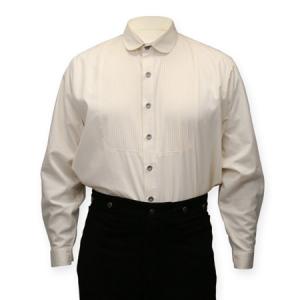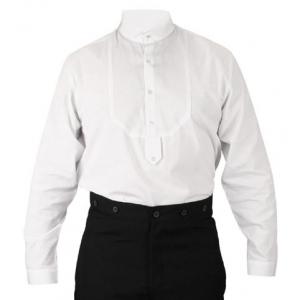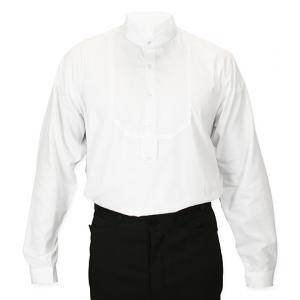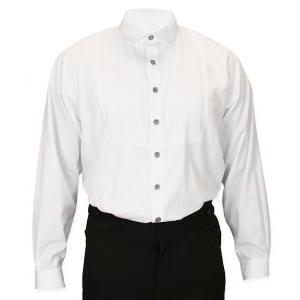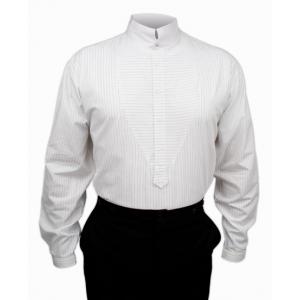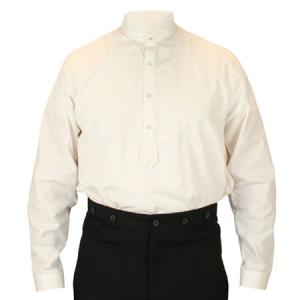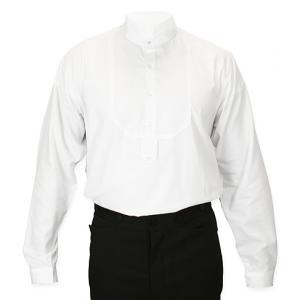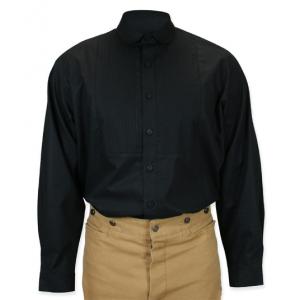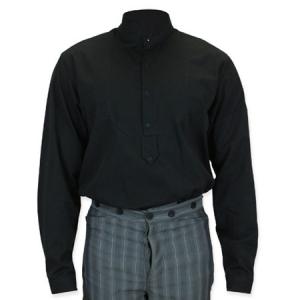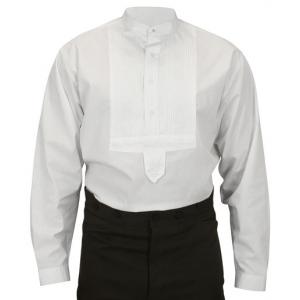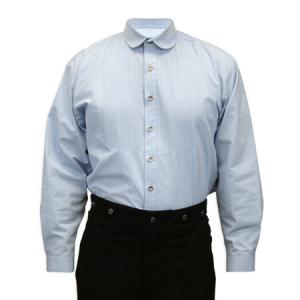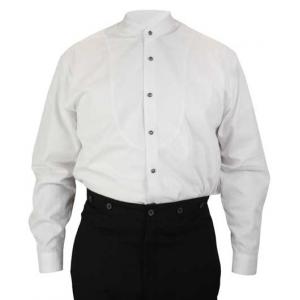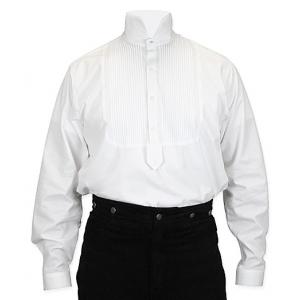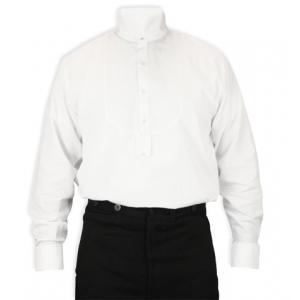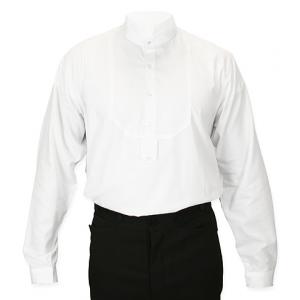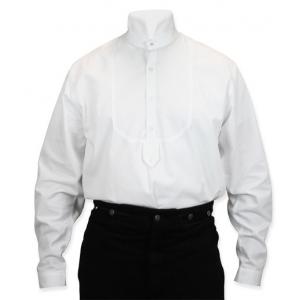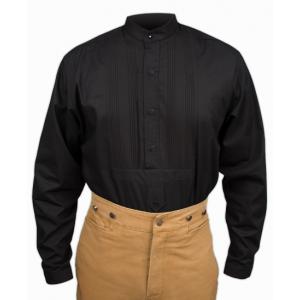Prices and Availability Subject to Change. Please call 800-997-4311 for more Information.
19 results
Q&A About Men's Vintage Dress Shirts
What is the history of men's dress shirts?
Men's dress shirts evolved from simple medieval undergarments to become elaborate status symbols throughout the 1800s. During this period, shirts transitioned from purely functional undergarments to visible indicators of wealth and class, featuring increasingly ornate details like pleated fronts and detachable collars and cuffs, while maintaining their core design as white garments made primarily of linen or cotton with varying levels of starch and formality.
What would rich men wear in the 1800s?
Rich men in the 1800s wore high-quality dress shirts made from fine linen or cotton, often featuring pleated fronts, detachable collars and cuffs, and sometimes embroidered details. These shirts were paired with silk waistcoats, finely tailored frock coats or morning coats, perfectly pressed trousers, and accessories like gold pocket watches, silk cravats, and top hats - all serving as visible markers of wealth and social position.
What kind of dress shirt did Victorian men wear?
Victorian men wore white dress shirts with high, stiff detachable collars and frequently detachable cuffs to facilitate laundering. These shirts typically featured pleated or plain fronts with a button placket that was often covered by a waistcoat, while formal evening shirts included decorated "bibs" or shirt fronts that might be embellished with pleats, piqué texturing, or even light embroidery for the most formal occasions.
MORE Q&A





